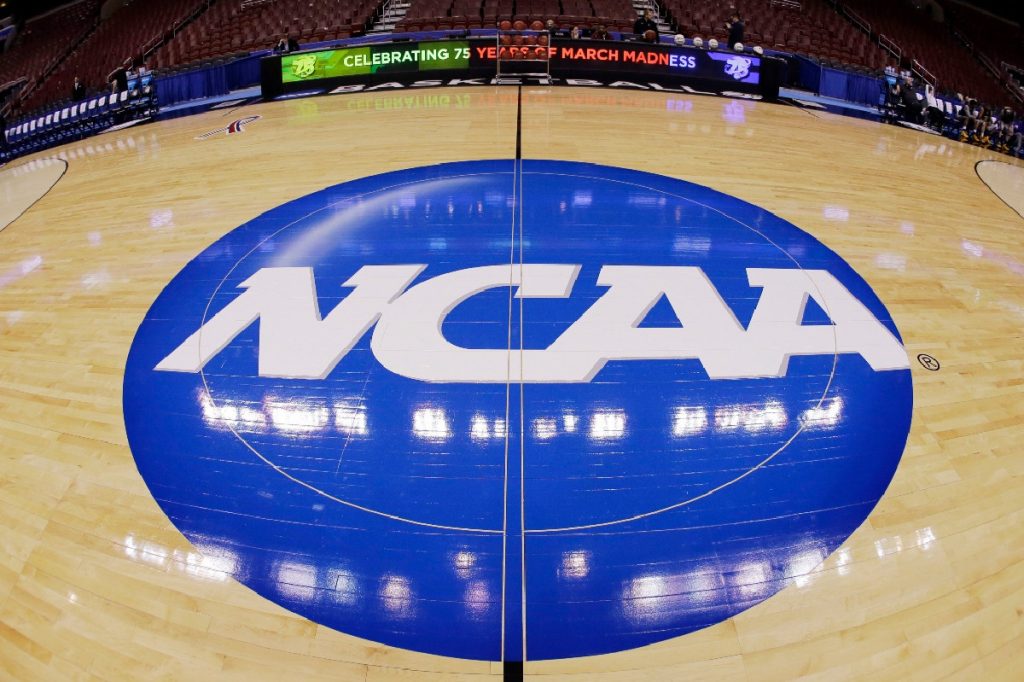As we learned in the previous blog the NCAA is a governing body responsible for regulating college sports in the United States. It consists of three divisions: Division 1, Division 2 and Division 3.
In this blog post, you’ll learn what the requirements are to be eligible to compete in each division.

The eligibility requirements are separated into 3 types:
1. Academic requirements
2. Amateurism requirements
3. Time-frame requirements
1. Academic Requirements
• Minimum GPA: 2.3
To be eligible to participate in Division 1 athletics, student-athletes must meet a 2.3 GPA set by the NCAA.
• SAT/ACT scores
As of January 2023, standardized test scores are not required for all student-athletes who initially enroll full-time on or after August 1, 2023.
• Core courses
Student-athletes must also complete a certain number of high school courses in core academic subjects, including English, math, science, and social studies. These courses must be completed before enrolling in college.

Core Courses FACT SHEET
Review the international academic requirements guide for your country
• Proof of graduation
Student-athletes must provide proof of graduation from high school. This may include a diploma, transcript, or other official document indicating that the student has met all graduation requirements.
Find out what is considered proof of graduation in your country
2. Amateurism Requirements
Division 1 student-athletes must maintain their amateur status and not participate in any professional athletic competition or receive compensation for their athletic ability.
"Amateurism" is a review of sports activities. The NCAA requires an amateurism certification for participation in Division I or II sports for domestic students and Division III for international students. When you register with the NCAA Eligibility Center, you are asked questions about your sports participation to determine your amateur status.
An amateur, as typically defined by the NCAA, is someone who does not have a written or verbal agreement with an agent, has not profited above their actual and necessary expenses or gained a competitive advantage in their sport.
3. Time-frame Requirements
a. Delayed enrollment
Traditionally, there is a 5-year clock for athletes to play 4 years in college in NCAA D1.
If a student-athlete does not enroll in college immediately after high school graduation, they may still be eligible to participate in Division 1 athletics. However, they may be subject to additional eligibility requirements.
b. Continuing Eligibility
To maintain their eligibility to participate in Division 1 athletics, student-athletes must meet ongoing academic requirements. They also must progress toward their degree by completing a certain number of credits each year.
1. Academic Requirements
Minimum GPA: 2.2
To be eligible to participate in Division 2 athletics, student-athletes must meet a 2.2 GPA set by the NCAA.
SAT/ACT scores
As of January 2023, standardized test scores are not required for all student-athletes who initially enroll full-time on or after August 1, 2023.
Core courses
Student-athletes must also complete a certain number of high school courses in core academic subjects, including English, math, science, and social studies. These courses must be completed before enrolling in college.

Core Courses FACT SHEET
Review the international academic requirements guide for your country
2. Amateurism Requirements
Division 2 student-athletes also must maintain their amateur status and not participate in any professional athletic competition or receive compensation for their athletic ability.
Read the amateurism requirements in the NCAA D1 section to learn more.
3. Time-frame Requirements
If you play at a Division II or III school, you have the first 10 semesters or 15 quarters in which you are enrolled as a full-time student to complete your four seasons of competition.
a. Delayed enrollment
If a student-athlete does not enroll in college immediately after high school graduation, they may still be eligible to participate in Division 2 athletics. However, they may be subject to additional eligibility requirements.

b. Continuing Eligibility
To maintain their eligibility to participate in Division 2 athletics, student-athletes must meet ongoing academic requirements. They also must progress toward their degree by completing a certain number of credits each year.
Division III of college sports has no set national standards for determining or maintaining student-athlete eligibility.
However, these athletes must be academically "good standing" and making satisfactory progress towards their degree as determined by their institution.
To be eligible to participate, Division III student-athletes must be enrolled in a minimum of 12 credit hours per semester or quarter, regardless of the institution's definition of "full-time."
Understanding these requirements, guidelines and regulations can be overwhelming. However, as experts at +31 Sports, we thoroughly understand the rules. If you have any questions regarding eligibility or just want to learn more, don't hesitate to reach out to us!